Film Camera Review: The first manual focus Programmed Auto-Exposure (AE) 35mm SLR film camera from Nikon.
<< Click on image for enlarged Lightbox display >>
When talking about recommendations for a great 35mm analog SLR camera for newbies or for those who want to get into analog photography, one should not miss out on the Nikon FG, the first 35mm SLR with Programmed Auto-Exposure (AE) from Nikon, as one of the great choices to make.
This is more so if one realizes that the FG features a lens mount that will accept each and every Nikkor manual focus lens produced since 1977, and converted pre-Ai lenses made before then.
Each of these lenses can even be used with the FG's Program mode, something which cannot be said of other camera brands of that era. The Nikon FG, an entry-level 35mm analog SLR, was introduced in 1982.
The camera replaces the Nikon EM, which has been on the market since 1979 and came with substantial improvements, including full manual controls, aperture-priority shooting mode, and an excellent program mode.
Introduction to the Nikon FG 1, Video 1 of 2
Nikon replaced the entry-level EM SLR with the FG in the mid 1980s. The FG represented a substantial improvement over the EM, which was basically an interchangeable-lens point-and-shoot camera. The FG introduced numerous improvements such as full manual controls, aperture-priority mode shooting, and a very competent program mode.
Design and Build
Though the FG's build is not as robust as Nikon's pro-level counterparts, the compact and diminutive body is a lot more than it seems.
The camera is equipped with a vertical-travel electro-mechanical Copal shutter that operates steplessly in P (Program) and A (Aperture-Priority) modes at speeds from 1 second to 1/1000 second, and quartz timed in manual mode. A mechanical 'M90' shutter speed option is available for operation without a battery, and Bulb mode for long exposures.
The FG also comes with a self-timer, backlit compensation buttons that automatically overexpose the scene by two stops, +2EV exposure compensation in 1/2 stops, film ISO range from 25 to 3200 (which can be extended to 6400 via the exposure compensation method), a detachable finger grip, and a film memo holder on the back.
You can also set the beeper, which warns when exposure speed is below the normal handheld threshold, to ON or OFF as per your shooting preference.
The FG is the only amateur-level model that comes with Nikon's TTL OTF flash control. The FG-20, which later replaced the FG, was actually a step-down model lacking TTL OTF control.
Basic Camera Features
The Nikon FG is elegant both in black and chrome.The top plate of the camera sports the rewind lever which is integrated with the film ISO (pull and turn to operate) and Exposure Compensation (press the button located towards the back of the plate to operate) dial on the left, and a fitted hot-shoe on top of the pentaprism, and on the right, the shutter button, which is integrated with the shutter speed selector dial, and the film forward crank.
The shutter speed selector dial deploys a button that has to be pressed to set the camera to P (Program) mode, and again to release the camera from both the P (Program) and A (Aperture-Priority) modes. A small lever located between the knob and the film forward crank switches the beeper ON or OFF. The film counter window is located towards the right edge of the top plate.
The lens mount housing occupies the bulk of the front panel, with the self-timer lever mechanism located on the lower-left area of the front panel, the finger grip on the front edge of the body, and on the right of the front panel, the lens release lock and the backlit compensation button, located just below the rewind crank dial.
The film memo holder is located on the film back, while on the bottom plate, the battery chamber and cover, the film rewind release button, the motor drive coupling, and the electrical contacts are located. With the camera on a stable tripod, the self-timer mode can also be used as a 'mirror lockup' mechanism for sharp and vibration-free images.
Viewfinder Info
The screen is bright and clear, and it is one of the reasons why the FG is also an exceptional low-light camera.
Metering
Metering on the Nikon FG is another of Nikon's greats, the classic 60/40 center-weighted pattern acknowledged to be almost flawless, accurate, and one that seems never to miss its mark. Sixty percent of the exposure value is metered from the center of the frame, with the remaining forty percent averaged in from the remainder of the image.Programmed AE (Automatic Exposure) Mode
The P (Programmed Automatic Exposure) mode is what the Nikon FG is all about. In this mode, the FGs will read the center-weighted brightness of the image and interpolate the reading to a set of ideal combinations of stepless lens opening and stepless shutter speed from 1 to 1/1000 second (see illustration).Nothing could be simpler, and the system is accurate and dependable.
All you have to do is set the lens at its minimum aperture and ensure that the shutter speed recommendation is within the handheld threshold.
Aperture Priority AE Mode
In this mode, the matching shutter speed to your preselected aperture is also stepless and automatic, from I to 1/1000 of a second.
Manual Exposure Control
The FG allows you to forego both automation modes and do your shots in full manual mode instead. Do this by setting both the lens aperture and shutter speed yourself. The LED lights in the viewfinder will indicate the optimum shutter speed you should set the shutter speed to. Use this information as a guide, for example, to create under- or over-exposed shots.M90 and B Shutter Speeds
The M90 (1/90sec.) shutter speed setting enables the camera to be used when the battery is drained, and B is for long exposures. These two are controlled mechanically and are independent of battery power. You can also use the M90 to solve the unstable behavior of the shutter mechanism if it does happen.Lens Compatibility
The FG requires Automatic Indexing (AI) Nikkor lenses for its P and A modes to function, meaning that you can only use Ai, AI-S, and Nikon Series E Lenses. Non-AI and AI-converted lenses are not generally usable, and neither are AF, VR, and DX lenses, which will mount but will not function properly.Film Loading
One unique feature of the FG is during film loading, which I am sure you are familiar with, or when the film back is opened, where the electronics are disabled, and the camera defaults to the mechanical 'M90' shutter setting. The system will reactivate only after the film back is closed and the film has been forwarded to Frame 1, ensuring that the 2 blank shots you need for the frame forward are not hindered by any presets.Battery
The Nikon FG requires a pair of SR or AR44 button cells to power the shutter and metering system. These cells are easily available and only need to be replaced after a period of intermittent use. Without the battery, you still can use the FG in full manual mode with the shutter speed set to 'M90' and the Sunny-16 Rule for the aperture setting of your lens.Using The Camera
Even with a Nikon Series E 50mm F1.8 lens fitted, the Nikon FG is still very light, compact, comfortable in your hands, and easy on the neck. Shooting in Program mode is all but worry-free; set the shutter speed dial to 'P', set the aperture of the lens to its smallest setting, and you are all set to go.Go deeper into the DoF (Depth of Field) realm with the Aperture-Priority mode. Set the shutter dial to 'A', and the lens aperture to what you want it to be, and the FG will set the shutter speed automatically for that all-important shot.
Go into manual mode, and the world vistas will start to open up. Have a Speedlight handy, and see how the TTL OTF control handles your images. Fit another Nikkor Ai-S lens to the camera, and the world will open up right in front of your eyes.
The FG has also been said to be one of the best amateur cameras on the vintage market ...

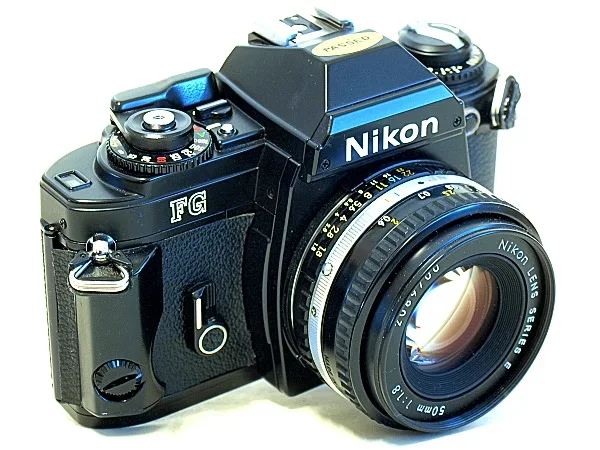
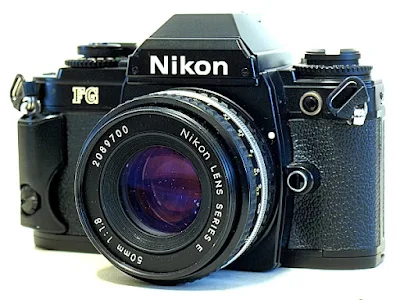


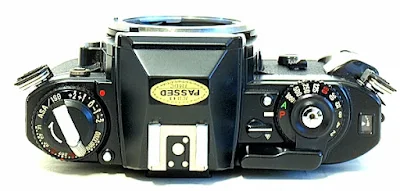
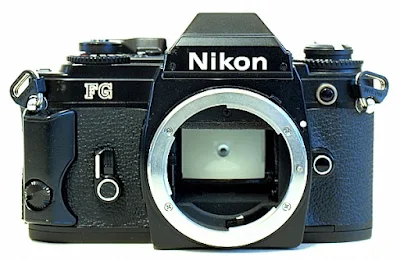

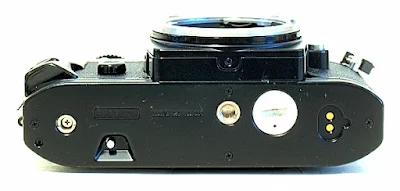
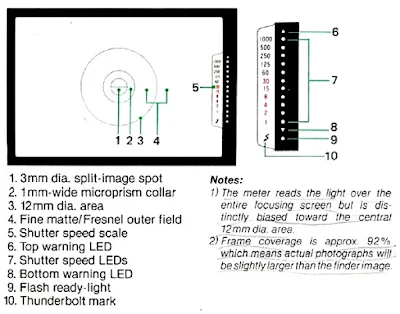
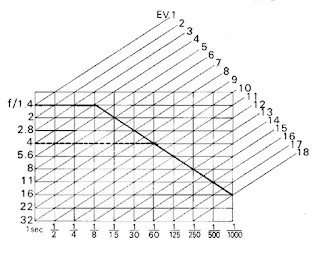












i found this on our old stuff on our house. how much does this cost? it comes with 3 lenses that i dont know the specs one says tamron adaptall 2
ReplyDeleteBest is to check on the big-E for comparative prices, or get your local camera outlet to give an estimate. The value will depend on the physical and working condition of both the camera and lenses. Thanks.
Delete